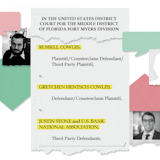Jurors in the federal racketeering conspiracy trial of three alleged Minneapolis Bloods gang members will begin deciding Friday whether street gangs can be treated as criminal enterprises akin to the mafia families of decades past.
An anonymous jury of 12 is expected to start deliberating in St. Paul after receiving a lengthy set of instructions from Judge Susan Richard Nelson. They’ll decide a trial that started one month ago and was capped Thursday by closing arguments that spanned a full day.
Desean James Solomon, 34, of Richfield is charged with racketeering conspiracy, carrying and using a firearm in a crime of violence and aiding and abetting — all in connection to a series of crimes prosecutors said were to benefit the Minneapolis Bloods. Michael Allen Burrell, 44, of St. Paul and Leontawan Holt, 26, of Minneapolis have also been on trial on charges of aiding and abetting and carrying and using a firearm in a crime of violence.
Assistant U.S. Attorney Esther Mignanelli, in making the government’s final case to the jury, repeatedly punctuated descriptions of killings and drug trafficking with the coda of “they did this because they were Bloods.”
“What does it mean to be a Blood? It means to prove yourself through the crimes you commit,” she said. “It means peddling poisonous drugs throughout the city but especially your territory. It means carrying and sharing guns, and when you have that gun you’re expected to use it. Because for Bloods, when one Blood moves they all move. When one Blood fights, they all fight. When one Blood shoots, they all shoot.”
The case is a rare application of the federal Racketeer Influenced and Corrupt Organizations (RICO) statute to target a Minneapolis street gang. The three men on trial are among 80 charged to date under U.S. Attorney Andrew Luger’s still-ongoing federal violent crime crackdown that has had a heavy emphasis on prosecuting gang members in the Twin Cities. Another RICO trial targeting the north Minneapolis Highs gang is expected to follow next year.
Two homicides, one in June 2020 and another in April 2022, underpin the government’s RICO allegations, as well as open-air drug sales in the Bloods territory that includes George Floyd Square.
Defense attorneys on Thursday challenged the description of the Bloods as an organized criminal enterprise — instead painting it as an amalgamation of cliques and neighborhood groups that engage in sporadic violence.


